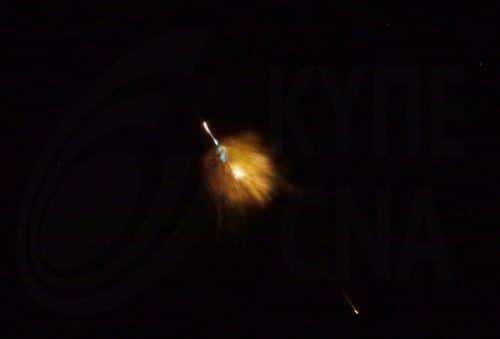Two pairs of Typhoon FGR4 fighter jets that took off from the Akrotiri airbase in Cyprus are believed to be those taking part on behalf of the United Kingdom in the international operation to defend Israel against the Iranian attack on Saturday night.
As British Prime Minister Rishi Sunak confirmed on Sunday, British fighter jets shot down "a number" of Iranian attack drones. According to the Telegraph, that number was between ten and twenty.
The jets took off from the British base as part of Operation Shader, the ongoing operation against ISIS in Iraq and Syria.
Their main mission was to cover the positions of the American aircraft that rushed to the defense of Israel. However, as it appears, at a meeting of the Cobra emergency response committee in Downing Street on Friday, Britain's political leadership had, on legal advice, given Typhoon operators the additional mandate to shoot down Iranian drones that would enter their area of responsibility.
This field was the airspace of Iraq and Syria, where the downing took place. British fighters were not deployed over Israel, as the British Ministry of Defense says.
The Typhoon pilots, supported by a Voyager-type aerial refueling aircraft, had taken part in Operation Shader several times before, had been briefed on the weekend's special conditions and were on high alert.
It was the first "air combat mission" for Britain's Royal Air Force since the Falkland Islands War in 1982, a Times source said. At the time, Harrier-type aircraft were involved in air combat with Argentine fighters.
The airspace in which the British Typhoons were deployed, the Telegraph reports, was determined using signals provided by security intelligence services from Agios Nikolaos Station, inside the British base at Dekelia, where the British maintain a "listening station" covering the middle east.
Each Typhoon aircraft is capable of carrying six medium-range missiles and two shorter-range air-to-air missiles.
Operators also rely heavily on the state-of-the-art HMSS targeting and targeting system, which is built into their 'bionic' helmet.
Asked whether the British would again participate in the defense of Israel against Iran, British Foreign Minister David Cameron answered affirmatively in the event of new attacks, noting at the same time that these decisions are under constant evaluation.
Source: KYPE
